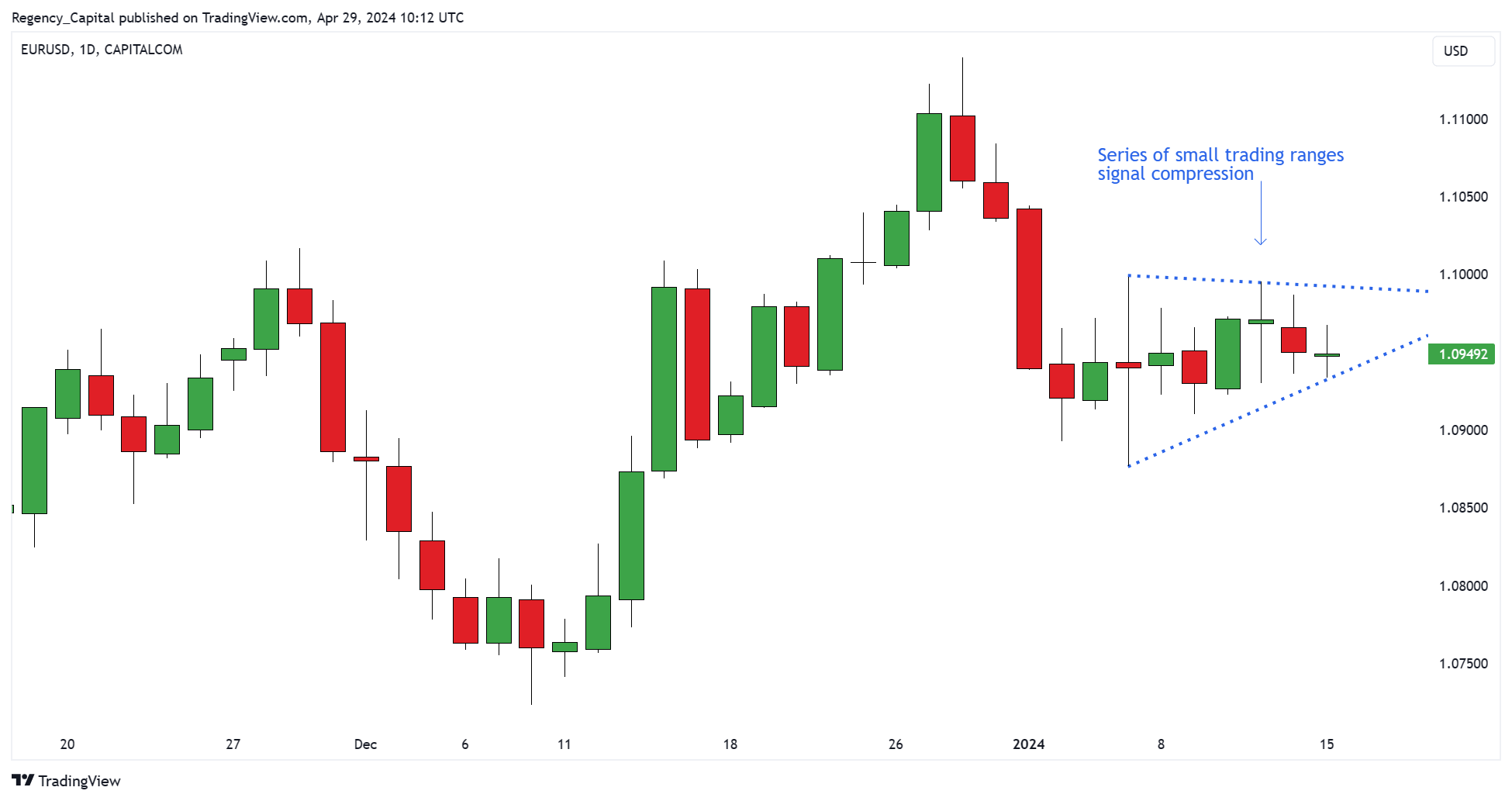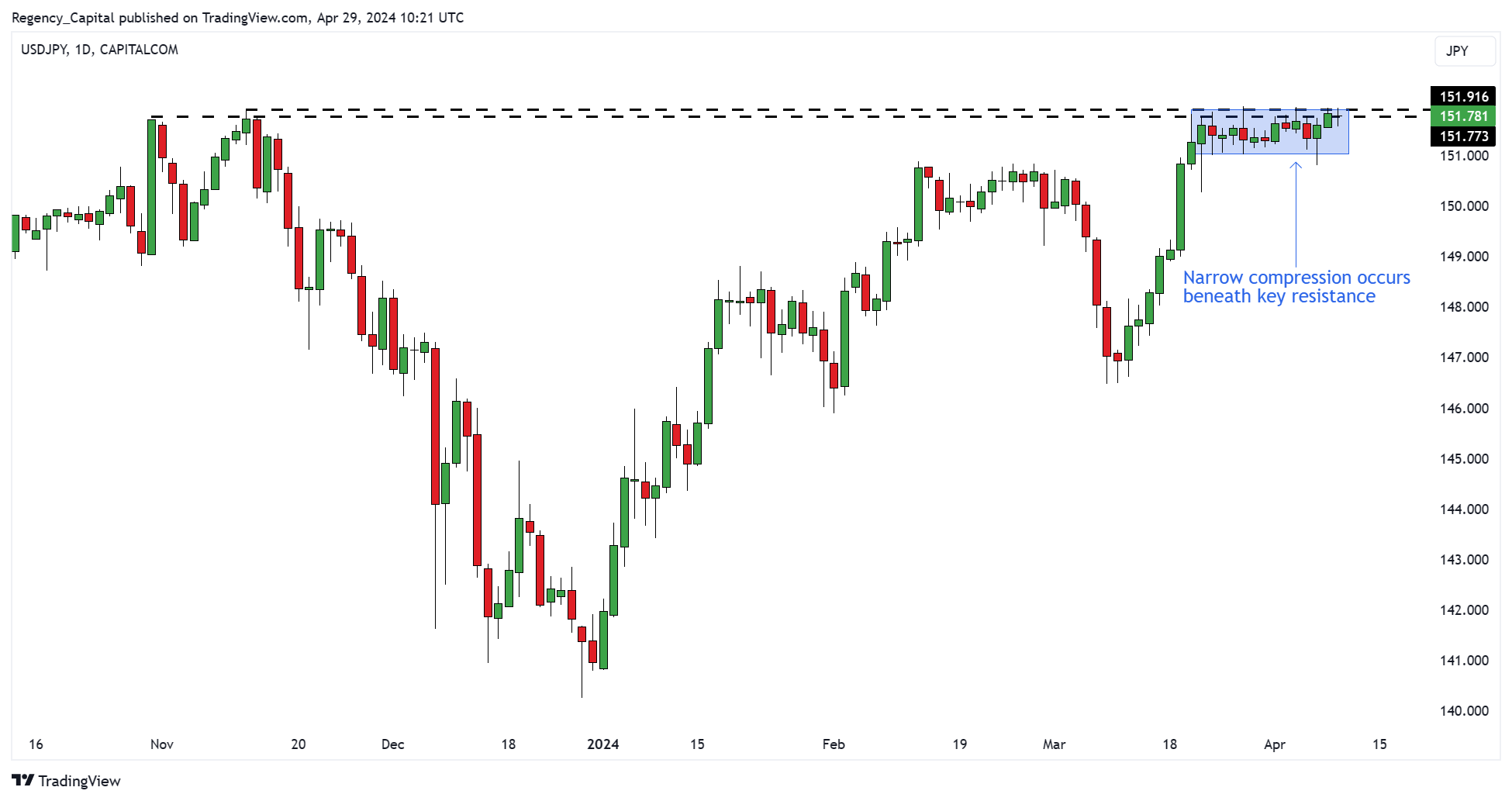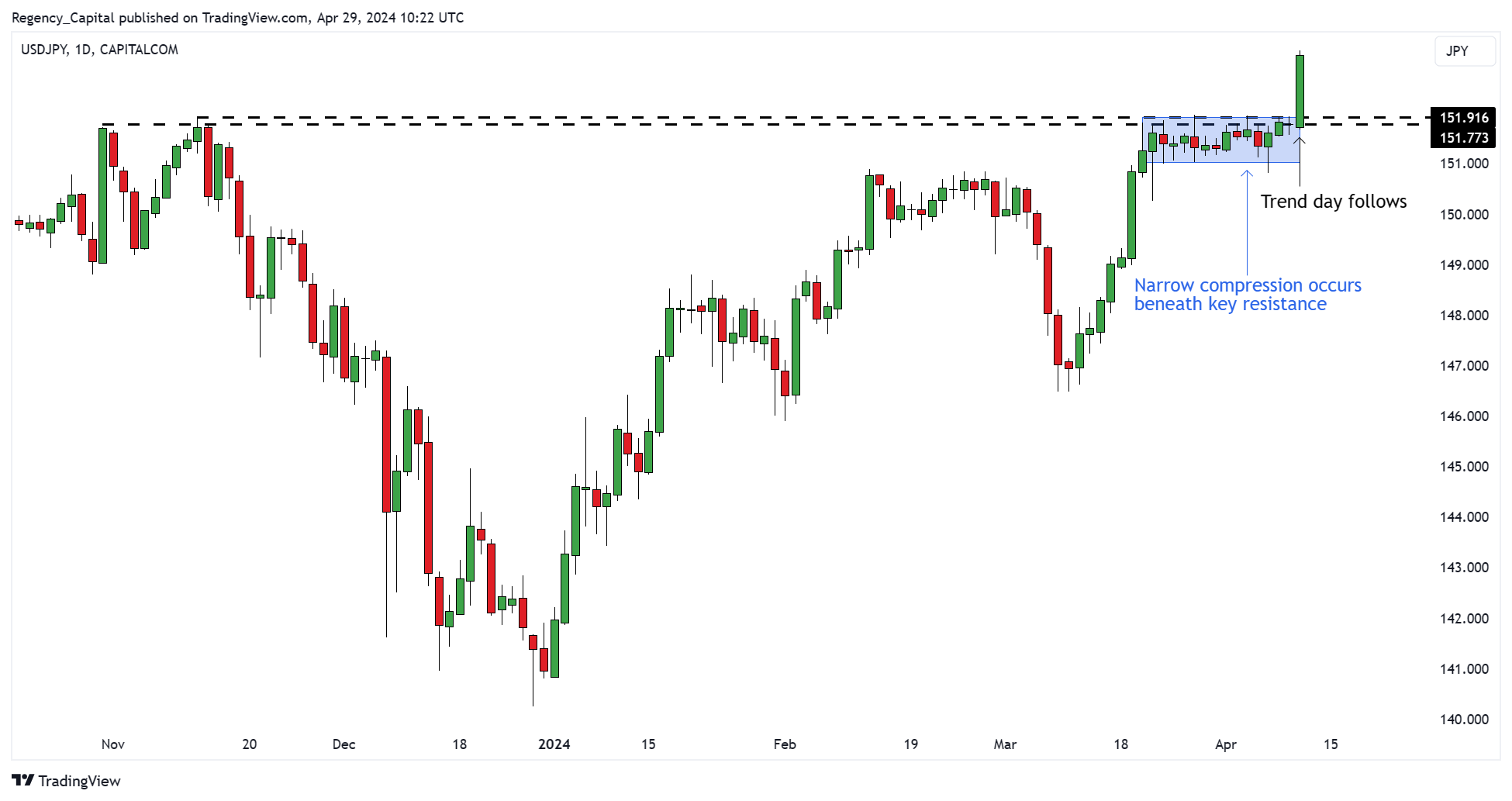Hunting for Trend Days Part 2: Strategies and Trade Management
Let's delve deeper into advanced strategies for maximising opportunities and effectively managing trades during trend days.
Welcome back to the second part of our series on hunting for trend days. In Part 1, we explored the fundamental characteristics of trend days and the essential tools for identifying them early. Now, let's delve deeper into advanced strategies for maximising opportunities and effectively managing trades during trend days.
Advanced Strategies for Identifying Trend Days
Compression Patterns
A trend day usually causes a significant expansion of the daily trading range. Given market’s typically cycle from periods of small daily ranges to periods of expansive daily ranges – traders can anticipate trend days by identifying periods of intense range contraction known as compression patterns.
Compression patterns take many forms and are given many different individual names such as flags, wedges and triangles. They consist of at least three trading sessions in which the daily trading ranges are contracting. The patterns create the ideal backdrop for a trend day to occur and when markets start to compress, traders should be on high alert for a trend day to develop.
Example 1:
Before:
 (Past performance is not a reliable indicator of future results)
(Past performance is not a reliable indicator of future results)
After:
 (Past performance is not a reliable indicator of future results)
(Past performance is not a reliable indicator of future results)
Example 2:
Before:
 (Past performance is not a reliable indicator of future results)
(Past performance is not a reliable indicator of future results)
After:
 (Past performance is not a reliable indicator of future results)
(Past performance is not a reliable indicator of future results)
Breakouts from Key Levels
Trend days often require high levels of market participation – making key levels of support and resistance natural catalysts for trend days to occur. When a market starts to coil within a series of tight trading ranges beneath key levels, traders should be on alert for a potential trend day.
Examples:
Before:
 (Past performance is not a reliable indicator of future results)
(Past performance is not a reliable indicator of future results)
After:
 (Past performance is not a reliable indicator of future results)
(Past performance is not a reliable indicator of future results)
Before:
 (Past performance is not a reliable indicator of future results)
(Past performance is not a reliable indicator of future results)
After:
 (Past performance is not a reliable indicator of future results)
(Past performance is not a reliable indicator of future results)
Optimising Entries
Wait for Confirmation:
Traders using this strategy would usually avoid pre-emptive entries and wait for confirmation that a trend day is developing before entering trades. They could also use the tools outlined in part 1 such as early breaks above or PDH/L, holding above (below) a rising (falling) VWAP, and sustained trending moves above the 9 period EMA.
Time Frame Alignment:
Align your trading time frame with the prevailing trend on higher time frames for better trade timing and increased profitability. Use multiple time frame analysis to identify confluence and strengthen your trading decisions.
Avoid Overtrading:
Maintain discipline and avoid overtrading during trend days. Stick to your trading plan and only take high-quality setups that align with your strategy and risk management rules.
3 Trade Management Techniques for Trend Days
- Step 1: Scaling In and OutInstead of entering a full position at once, consider scaling into trades gradually as the trend day develops. Similarly, scale out of positions in increments to capture profits while allowing a portion of the position to ride the trend for potential further gains.
- Step 2: Trailing Stop LossYou may also consider implementing a trailing stop loss strategy to protect profits and minimise losses during trend days. Adjust the stop loss level to trail behind price action, locking in profits as the trend progresses while giving the trade room to breathe.
- Step 3: PyramidingPyramiding involves adding to winning positions as the trend strengthens. However, exercise caution and avoid overleveraging, as trend reversals can occur suddenly, leading to significant losses.
Summary:
Mastering the art of hunting for trend days requires technical analysis skills, risk management techniques, and psychological discipline. By implementing advanced strategies for identifying trend days and effectively managing trades, traders can aim to take full advantage when trend days develop.
In Part 3, we'll explore real-life case studies of successful trend day trades and dive into the psychology behind trading trend days.